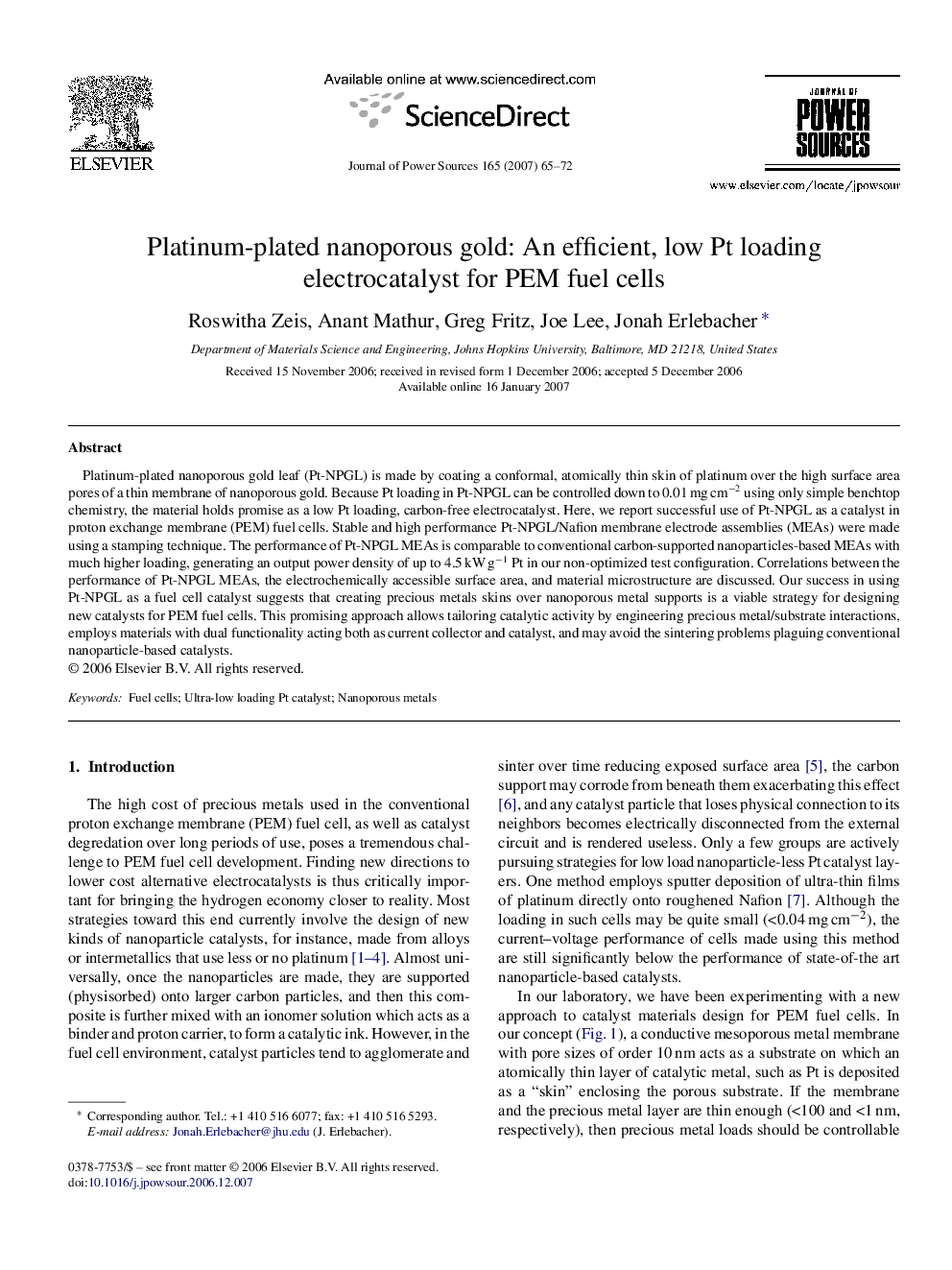| Article ID | Journal | Published Year | Pages | File Type |
|---|---|---|---|---|
| 1291921 | Journal of Power Sources | 2007 | 8 Pages |
Platinum-plated nanoporous gold leaf (Pt-NPGL) is made by coating a conformal, atomically thin skin of platinum over the high surface area pores of a thin membrane of nanoporous gold. Because Pt loading in Pt-NPGL can be controlled down to 0.01 mg cm−2 using only simple benchtop chemistry, the material holds promise as a low Pt loading, carbon-free electrocatalyst. Here, we report successful use of Pt-NPGL as a catalyst in proton exchange membrane (PEM) fuel cells. Stable and high performance Pt-NPGL/Nafion membrane electrode assemblies (MEAs) were made using a stamping technique. The performance of Pt-NPGL MEAs is comparable to conventional carbon-supported nanoparticles-based MEAs with much higher loading, generating an output power density of up to 4.5 kW g−1 Pt in our non-optimized test configuration. Correlations between the performance of Pt-NPGL MEAs, the electrochemically accessible surface area, and material microstructure are discussed. Our success in using Pt-NPGL as a fuel cell catalyst suggests that creating precious metals skins over nanoporous metal supports is a viable strategy for designing new catalysts for PEM fuel cells. This promising approach allows tailoring catalytic activity by engineering precious metal/substrate interactions, employs materials with dual functionality acting both as current collector and catalyst, and may avoid the sintering problems plaguing conventional nanoparticle-based catalysts.
